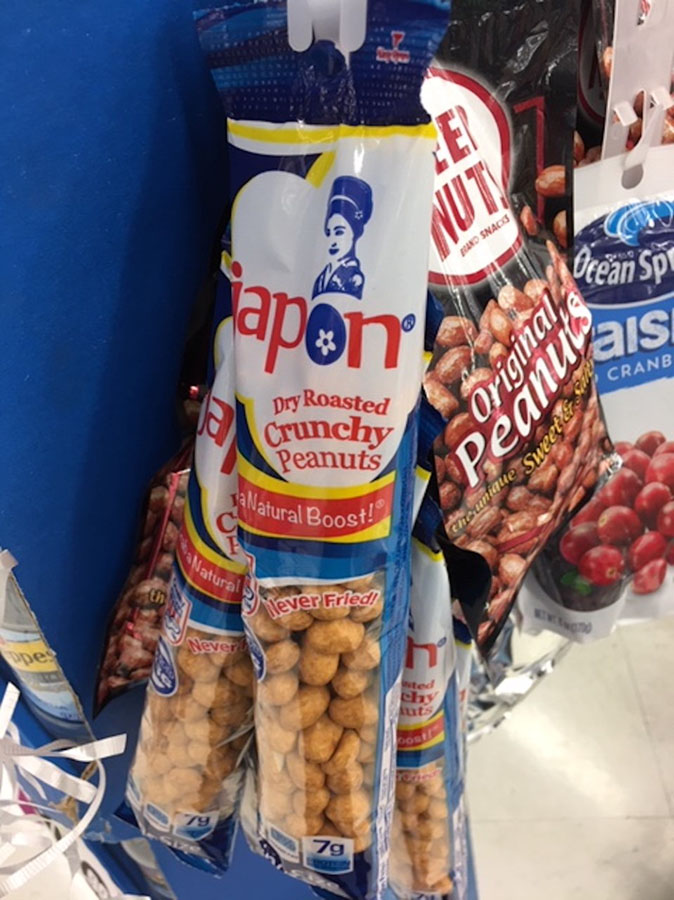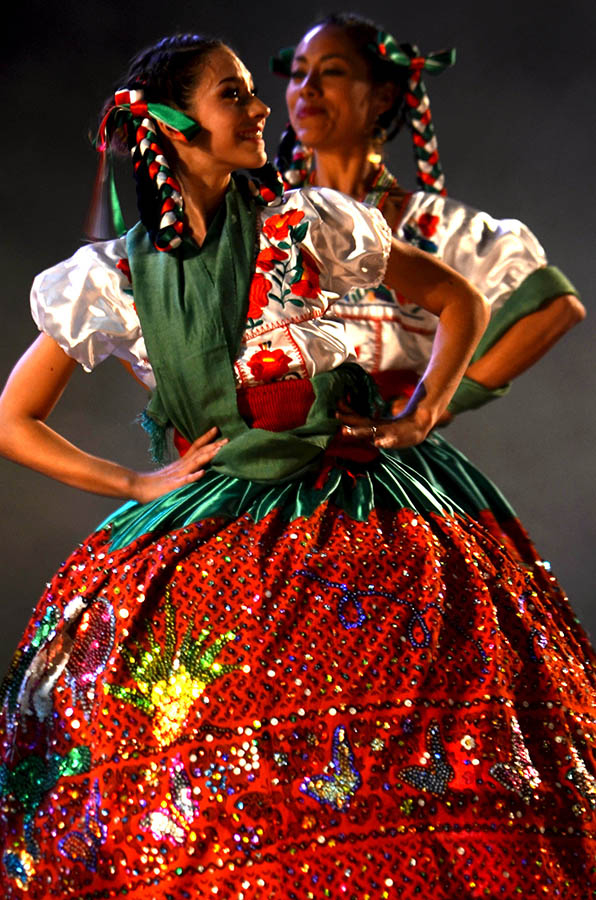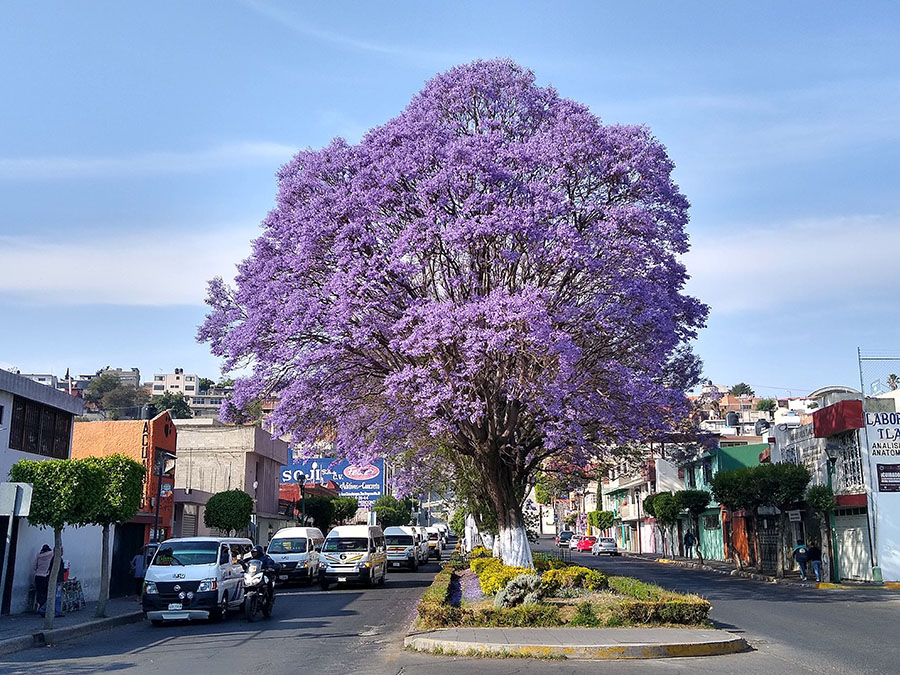The Afterlives of Transpacific Material Culture in Mexico
Cultural memory scholar Marita Sturken maintains that “Cultural memory is produced through objects, images, and representations. These are technologies of memory, not vessels of memory in which memory passively resides so much as objects through which memories are shared, produced, and given meaning.” 1 Let’s assume, then, that objects and images are technologies of memory and that their potential agency to narrate their history is worth analyzing. In the following paragraphs, I will focus on objects that contextualize Asian-Mexican cultural production. Indeed, one way to recover the Asian ethnic heritage in Mexico is through material culture, which could be considered, in Marxist terms, as the base (production forces, materials, resources that generate goods needed by society) upon which the superstructure (culture, identity, ideology, social institutions) rests, with the latter at times justifying the former.
The agency of objects
Because the agency of objects may affect human beings, literary scholar Héctor Hoyos suggests, for an analysis of what he terms the “human-nonhuman continuum,” 2 “the task is to think of the past through the prism of things.” 3 In his view, “nonhumans give and they receive; they domesticate us, we, them—intention is beside the point. Thus, a desire for sweetness informs our relationship with apples; for beauty, with tulips; and for intoxication, with marijuana.” 4 From this perspective, cultural production by Asian immigrant communities and their descendants reflects, in the representation of their own chronotopes and symbolic objects, the sociality of their emotions.
Chinese Latin American narratives’ expression of affect tends to present the image of the Chinatowns, cafés de chinos, or Chinese-owned shops as the quintessential loci of their immigrant experience [Fig. 1].
Likewise, Nikkei (Japanese overseas or persons living outside Japan who have one or more ancestors from this country) writing in Latin America embodies, in my opinion, a sui generis blend of nostalgia, cultural pride, and self-exoticization. Its collective structures of feeling share perceptions of the natural world, with cherry blossoms and Mount Fuji as privileged national symbols. Examples of recurrent motifs within the realm of material culture include the kimono, the ofuro (traditional Japanese bathtub), the bento box (single-portion takeout), and the ,butsudan (Buddhist altar). Along these lines, sushi, miso soup, and sake are considered emblematic national dishes and drinks. Traditional cultural practices that tend to be considered quintessentially Japanese are haiku writing, hanami (flower viewing), ikebana (art of flower arrangement), origami; sadō (tea ceremony), and tanomoshi (rotating credit association). Likewise, the shamisen and taiko drums are among the traditional musical instruments more frequently mentioned, just like sumo and kendo appear among the national sports and martial arts more practiced by characters in Japanese Mexican works. Each of these traditional objects, cultural expressions, and chronotopes (in which time and space merge to define the node or organizing center in a narrative where relations and contradictions are posited are sometimes resolved) function as symbolic repositories of Nikkei memories and identities. Yet, even though these collective structures of feeling are meant to be transmitted from generation to generation, they inevitably lose emotional value throughout the years. In any case, the analysis of material culture, just like that of literary (self-)representation, may be useful in the goal of restoring the cultural memory of disappearing or erased communities.
Early-modern material culture
Consider the following examples of transcultural Mexican material culture that contain traces of folk Asianness. First, the most emblematic example of Asian material culture coming to Mexico during colonial times is the China Poblana dress, associated with the city of Puebla [Fig. 2].
Various stories explain its origin. In one story, an enslaved princess from India (not China, despite the garment’s name) named Mirnha is abducted by pirates, taken to Macao and then to Manila. Once in Mexico, she is bought by Spaniards in Puebla. It is said that people there called her “china,” a generic label that is unfortunately still common in Spain and throughout Latin America, with the exception of Brazil, where Asians are instead Nipponized as Japonês or Japanese. Later, the Sosa de Puebla family purchased Mirnha and changed her name to Catarina de San Juan. Her outfits, according to the popular legend, inspired local women to blend, in transcultural fashion, the traditional clothing styles from India with Mexican indigenous ones, which resulted in the renowned China Poblana dress. It is characterized by a short-sleeve shawl embroidered with bright sequins, a blouse, slippers covered with green or red silk, and a two-part skirt: the upper part is made from green silk, and the lower one is often embroidered with flowers, birds, or butterflies. Yet, as Tatiana Seijas claims in Asian Slaves in Mexico: From Chinos to Indios, “In reality, we do not know who designed the costume. Catarina surely had no part in this creation.” 5
The unique and emblematic Fuente del Risco, the fountain at the Casa del Risco Museum (Isidro Fabela Cultural Center) in Mexico City, represents another link to the material heritage of both Japanese and Chinese cultural influences in Mexico [Fig. 3]. It is located in the former home of Isidro Fabela (1882-1964), a Mexican politician, historian, lawyer, and diplomat.

Fig. 3. Fuente del Risco. (Photo by the author, 2020)
This stunning, over eight-meter-tall fountain was built during the latter part of the 18th century and was joined to a wall in the courtyard by an unknown artist. Its international and eclectic decorations respond to the then common practice of using pieces of expensive tableware as ornaments. Among these pieces (riscos in Spanish, hence the fountain’s name), one can find red, blue, and green imari porcelain from Japan as well as Chinese fragments, including three plates from the Ming (1368-1644) and Qing (1644-1912) dynasties that were brought to the Spanish colony in the Galeón de Manila (Manila Galleon; also known as the Nao de China [The China Ship]). Shockingly, this gem of Mexican Ultrabaroque art was once used as a latrine after the house’s abandonment toward the end of the Mexican Revolution (1910-1920).
Still within the early-modern history of Mexico, historian Paulina Machuca has studied the importation of the Philippine coconut palm to Mexico, along with the introduction of the production techniques of tuba (Philippine spirit elaborated from the sap of palm trees) and vino de cocos (coconut wine). These were brought by Filipinos to New Spain’s (Colonial Mexico) western coast during the 17th century: “Coconut wine was the first distilled beverage that broke into the alcoholic beverage market in New Spain, around the year 1600. It was the first distillate that was produced, marketed, and consumed in a wide range of New Spain’s territory, from the hot land of the Pacific to the mining areas of the north.” 6 This Philippine distillation technique and the Asiatic alambiques (stills) 7 were imported during colonial times for the production of mescal, which often replaced that of coconut wine. According to Machuca, some of the so-called indios chinos (from what today are the Philippines, China, India, Borneo, Indonesia, New Guinea, and Sri Lanka) who were brought to colonial Mexico, and particularly to Colima, became wealthy thanks to coconut wine production. Therefore, the native product they brought along, the coconut palm, also “opened the door for them to a better and faster integration into New Spain’s society.” 8 Later, the need for additional workers demanded the addition of the colony’s indigenous labor force to this industry, some of whom eventually became master vinateros (vintners).
Likewise, Ana G. Valenzuela Zapata, Aristarco Regalado Pinedo, and Michiko Mizoguchi have studied East Asian influences in the production of mescal along the coast of Jalisco. As they explain, by the 17th century, both the Arabic and the Asiatic distillation processes arrived on the Pacific coast of Mexico, where they were used to make spirits from coconut and agave. 9 They argue that some types of shōchū (a Japanese alcoholic beverage that is distilled from rice, barley, sweet potatoes, buckwheat, or brown sugar) are produced on the islands of Kyushu and Okinawa with the same distilling technique used to produce a type of mescal known as raicilla in El Tuito (Cabo Corrientes municipality) and Zapotitlán de Vadillo, as well as mescal de olla from Manzanilla de la Paz. This distillation technique, known in Mexico as huichol or Asiatic still, is called kabutogama chiki in Japan. Valenzuela Zapata, Regalado Pinedo, and Mizoguchi argue that distillation, introduced by the Spanish to Mexico, was implemented using different methods, rather than only via the coconut wine model, as some researchers suggest. They add that those individuals who were familiar with Asian distilling techniques and who used different materials along the Mexican Pacific coast were not necessarily Asian themselves. This Eastern technique, simpler than the Arabic alambique, still survives on both continents.
Twentieth-century material culture
Another iconic referent of Nikkei cultural heritage in Mexico are the jacaranda trees that the Japanese immigrant Tasuguro Matsumoto (1865-1955), founder of the original Matsumoto flower shop in Mexico City, brought to Mexico from Brazil and Paraguay. As the story goes, President Pascual Ortiz Rubio (1877-1963; President 1930-1932) requested, from the Japanese government, a donation of cherry trees to plant them along the Mexican capital’s main avenues as a symbol of friendship between the two countries. Thereupon, Japan’s foreign minister asked Matsumoto about the feasibility of planting this type of tree in the Mexican capital. Matsumoto, who then happened to be growing jacaranda trees in his greenhouse, argued that the cherry tree was not the most appropriate one for Mexico City’s climate, recommending the jacaranda instead. Thanks to the Matsumoto family, therefore, this city and other Mexican cities that followed its example enjoy stunning jacaranda trees from South America that bloom in early spring and that have become a symbol of Mexico [Fig. 4]. During World War II, Matsumoto, who was a naturalized Mexican citizen, offered his Hacienda Batán as a refuge for those Nikkei who were forced by the Mexican government to relocate to Mexico City at the request of the United States government.
One may likewise notice that in the Mexican city of San Luis Potosí, which has had a Japanese-Mexican community for several generations, people use the word yuki (snow in Japanese) for a type of shaved ice sweetened with flavored syrups, rather than the usual terms of raspados or granizados. Those who sell this treat are called yukeros. According to Ricardo Pérez Otakara, his grandfather, Fusaichi Otakara, first brought the yukeras to northern Mexico. Fusaichi, Pérez Otakara adds, was a descendant of a samurai who immigrated to Mexico in 1907, at the age of 17, and worked as a day laborer, a miner, and a cook (Suárez n.p.). 10 Having been trained as a samurai, he became, like many other of his countrymen, an anonymous soldier of the Mexican Revolution and served as a cavalry captain under Francisco I. Madero (1873-1913; President 1911-1913) and Francisco “Pancho” Villa (1878–1923). Years later, Fusaichi made a living in Nuevo León selling yukis. He was also the founder of the Asociación México-Japonesa del Noreste (Northeastern Japanese Mexican Association).
In yet another example of Japanese-Mexican transculturation, “Japanese peanuts” (cacahuates japoneses or maníes japoneses in Spanish) were invented in Mexico City by the Japanese immigrant Yoshigei (Carlos) Nakatani (1910-1992) in 1945 and were first sold in the capital’s La Merced Market [Fig. 5].

Fig. 5: Cacahuate japonés (Japanese-Style Mexican Peanuts). (Photo by the author, 2020)
Before emigrating to Mexico, Nakatani had worked at a candy factory in his Japanese hometown of Sumoto, which made mamekashi (different types of seeds covered with flour and condiments). Years after his 1932 arrival, Nakatani decided to take advantage of his working experience in Japan: he cooked peanuts covered with a thick, hard, and crunchy coat of wheat flour and soy sauce. Today, Mexicans often mix them with chili powder and lime juice. Pressed to feed his eight children (the future visual artist Carlos Nakatani [1934-2004] and the recently deceased singer Gustavo “Nakatani” Nakatani [1949-2020] among them), he would distribute his “Japanese peanuts” throughout the market of La Merced. It is said that consumers would yell “¡Ahí viene el japonés!” (“Here comes the Japanese!”). Nipón, the company created by Nakatani and led today by one of his granddaughters, dominated the Japanese peanut market until 1980, when new brands like Sabritas and Barcel began to compete with Nipón, since Nakatani never sought a patent for the product. It is noteworthy that this type of peanut was called “Japanese” although it did not originate in that country. Unsurprisingly, the cacahuate japonés, now exported to Japan, is known there as “Mexican peanut,” and the bag in which it is sold sports a mariachi with a sombrero and a big moustache. This raises the recurrent issue of how these terms of ethnic or national origin (Japanese, Japanese Mexican) often have no fixed meaning in Latin America: depending on the speaker and context, the term can mean Japanese, Japanese Mexican, or simply Mexican.
A final example of transcultural material culture that bespeaks Nikkei communities’ long impact on Mexico is the chamoy, also known as Miguelito, a Mexican condiment made of dehydrated fruit, chili pepper, salt, sugar, and water, used in both powder and liquid forms. It is believed to have originated from umeboshi, a traditional Japanese dish made from pickled ume fruit (plum) with red colorant. The condiment was created in Mexico during the 1950s by Teikichi Luis Iwadare, a Japanese immigrant who decided to produce umeboshi with apricots, sometimes also plums or mangos, and to name it chamoy.
Failed transmissions
It is also noteworthy that not every object brought on the Manila Galleon has remained popular in Mexico. For example, the mantón de Manila (Manila shawl), a silk shawl originally made with chinoiserie-style motifs in China and derived from the Filipino pañuelo, was popular in colonial Latin America but failed to remain so. In Spain, it is still today considered a quintessentially traditional Spanish garment, worn, for example, by flamenco dancers and Andalusian women during festivities. The mantón de Manila, however, is believed to have influenced the designs of the Latin American rebozo, a long, flat garment handwoven from cotton, wool, silk, or rayon, like a shawl, and worn by Mexican women.
These objects tell us about “connected histories” (to use Sanjay Subrahmanyam’s term): 11 they help us to interpret networks of cultural contacts and economic exchanges between distant populations at a global level. Simultaneously, they reflect historical changes on a small and large scale that challenge nation-based historiographical approaches. Material evidence of human circulation, distilling methods, goods like ceramics or clothing, and methods of candy- or condiment-making paints a rich history of those global networks that, for a long time, found in Mexico a principal connecting hub, thereby contributing to a decentering of European modernity. The mentioned Asian or Asian-influenced objects and folk traditions represent micronarratives that metonymically push us toward more encompassing, global-scale macronarratives. They encourage us to rethink Mexican history beyond its national borders and from a different vantage point, looking instead at often silenced cross-cultural connections and clashes (e.g., slavery, human exploitation, racism, predatory extractivism), intercontinental economic connections, and immigration. Consequently, Mexican history becomes inextricably linked to Asian countries such as China, Japan, Korea, and the Philippines. 12
Ignacio López-Calvo is Presidential Chair in the Humanities and Professor of Literature at the University of California, Merced. He is the author of nine books, including The Mexican Transpacific: Nikkei Writing, Visual Arts, Performance (2022) and Saudades of Japan and Brazil: Contested Modernities in Lusophone Nikkei Cultural Production (2019). Email: ilopez-calvo@ucmerced.edu

